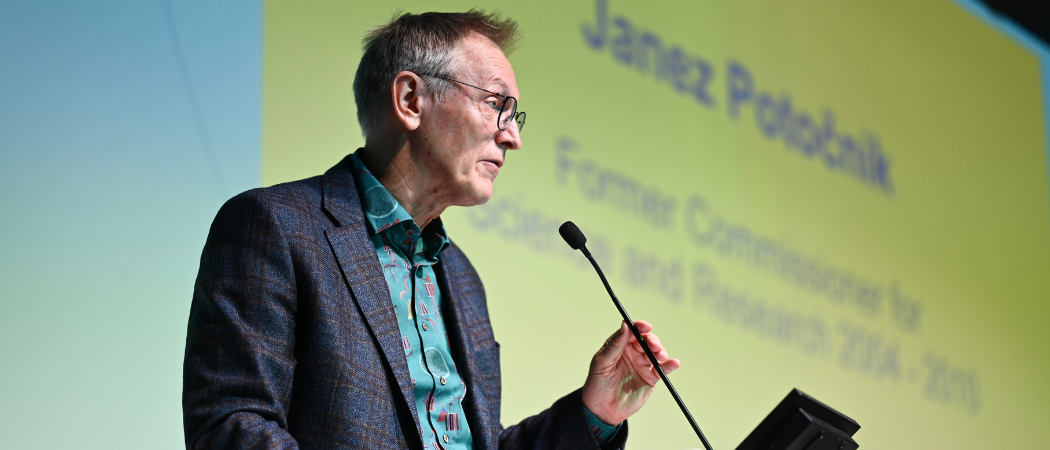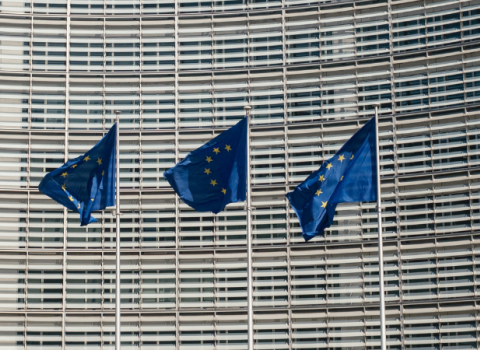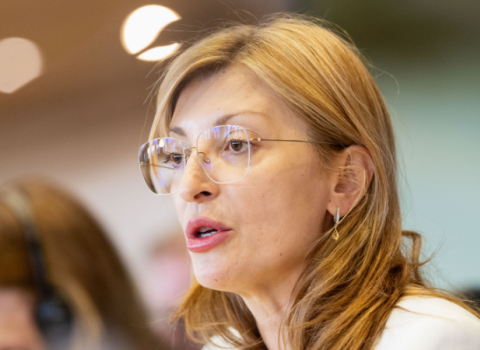Ursula von der Leyen plans for a European Research Area act to pave the way for research and innovation to be the fifth freedom of the single market

Janez Potočnik, former research, science and innovation commissioner 2004-2009 at the European Commission's conference held in Brussels on the European Research Area (ERA). Photo credits: European Union
The ambition of creating a true single market for research, innovation, knowledge and education seems closer to being realised, with researchers hoping Commission President Ursula von der Leyen’s plan to propose a European Research Area (ERA) act in her mission letter to future R&I commissioner Ekaterina Zaharieva means the long standing vision finally materialises.
The idea of guaranteeing the free movement of researchers, knowledge and technology dates back to 2000, but convincing member states to implement that vision has proved to be politically challenging.
This time there is the political legitimacy of high-level reports by two former Italian prime ministers Enrico Letta, who urged the EU to make R&I the fifth freedom of the single market, and Mario Draghi, who proposed creating a ‘Research and Innovation Union’ to advance competitiveness.
The ERA act proposal is “very good news” and is in line with Draghi’s vision, Mattias Björnmalm, secretary general of CESAER, an association of European universities of science and technology, told Science|Business.
It comes as discussions are taking place around the next ERA policy agenda for 2025-2027. Stakeholders gathered in Brussels this week for an event hosted by the Commission looking at past achievements and future opportunities.
During the conference, there was “a palpable sense of excitement that we are now firmly moving away from a low-level operational and voluntary approach, towards a high-level, bold, coordinated and mandatory, continent-wide push,” Björnmalm said.
The R&I union, the ERA act, and the fifth freedom are different labels for the same fundamental goal. The priority should be “tangible progress in the funding landscape to prevent falling further behind global leaders”, coupled with “a robust legislative framework to support the free flow of researchers and innovation across Europe”, he said.
For the ERA to work, it needs to empower early career researchers who have no job security and sometimes have to work for free, said Anneke Kastelein, a PhD candidate at Leiden University Medical Centre, told the meeting.
“They don’t only need a job, a place to work, and mentorship, but they need financial stability, and they need job opportunities throughout their PhD, postdocs, and beyond,” she said.
Europe should also strive towards more equal career prospects across the continent, to avoid brain drain from one EU country to another, she added.
Revamped ERA
The Commission’s last attempt to revitalise the ERA started four years ago, resulting in the first policy agenda being adopted for 2022-2024, to target concrete, but still voluntary, action - in contrast to the previous vague priorities.
That also saw the creation of the ERA Forum, which brings together member states and associated countries, the Commission, and R&I stakeholders to implement the policy agenda.
“That has been a true change in the way we are approaching policymaking, because we are going from a reactive approach as stakeholders to a proactive, co-creating approach with the policymakers,” said Silvia Gómez Recio, secretary general of the Young European Research Universities Network at the meeting.
Speaking to Science|Business, Thomas Jørgensen, director for policy coordination and foresight at the European University Association said, “I think compared to the other iterations of the ERA, this is a model that works in a much more inclusive way,”
“It can maybe have too many priorities, but as a model I think it works, and when within the individual actions you get that good dynamic of member states and the Commission setting priorities together, taking ownership of the agenda, then it’s a pretty good structure,” Jørgensen said.
Opening the conference on Wednesday, one of the leading proponents in the early days of ERA, Janez Potočnik, who was commissioner for science and research from 2004 to 2010 said, “It is too early to talk about the success of these latest reforms,” […] “but some actions such as renewed research assessment, knowledge valorisation, the revamp of the Strategic Energy Technology plan, and gender equality all show effects.”
It was Jacques Delors, architect of the Single Market, who first spoke of a fifth freedom. Potočnik later revived the idea in a paper he published in 2007. “I have always considered ERA as a process, even if my successors decided that ERA had been completed,” he said.
Subsequent commissioners including Máire Geoghegan-Quinn and Mariya Gabriel have pushed for deeper integration, but researchers continue to face major obstacles to working across borders.
Now, Potočnik is calling for a “big framework programme, with a bigger focus on ERA delivery”. In addition to Horizon Europe’s three pillars of excellent science, global challenges and industrial competitiveness, and innovative Europe, “the horizontal pillar of widening and deepening ERA should be a powerful coordination driver of all EU framework programmes,” he said.
In a message to the conference, Enrico Letta said that after Delors and Potočnik’s efforts to realise the fifth freedom, there now appears to be momentum behind the idea. “I strongly hope the fifth freedom can become the main flagship of the next five years,” he said.
Legislative measures
It’s not clear yet what an ERA act would entail. “A new ERA act could give us the opportunity to look further, to see what we can do more together, to see whether we can use, if possible and if necessary, legislative measures in order to create a more integrated European Research Area,” said Anna Panagopoulou, director for the ERA & Innovation at the Commission’s research directorate general.
Sergej Možina, co-chair of the ERA Forum where he represents member states, said policymakers could implement the fifth freedom by introducing a “specialised legal framework only for researchers”, similar to the EU-wide status, or so-called 28th regime, that von der Leyen wants to introduce for companies.
When you look at the areas where progress has been made already, he told Science|Business, “it’s mostly where we gathered the political courage and the support to legislate in the framework programme, the European Research Infrastructure consortia (ERIC), the joint undertakings.”
Možina rejects the suggestion that mandatory actions are needed, however, saying this “would never work” as it would never have the support of member states. One option, he suggests, would be to expand the ERIC framework, for example to introduce a voluntary European employment contract.
It’s good that the ERA act is initially vague, Možina says, as member states and stakeholders will be able to help shape it through the ERA Forum. He is confident the new governance model will give the proposal a better chance of gaining national support than past efforts.
The Commission has opened a consultation until the end of September on the revamped ERA four years on. It plans to adopt a communication at the end of October taking stock of the progress in that time and the challenges that remain.
Early next year, the Commission will present a proposal for an EU Council recommendation setting out the new policy agenda.





 A unique international forum for public research organisations and companies to connect their external engagement with strategic interests around their R&D system.
A unique international forum for public research organisations and companies to connect their external engagement with strategic interests around their R&D system.